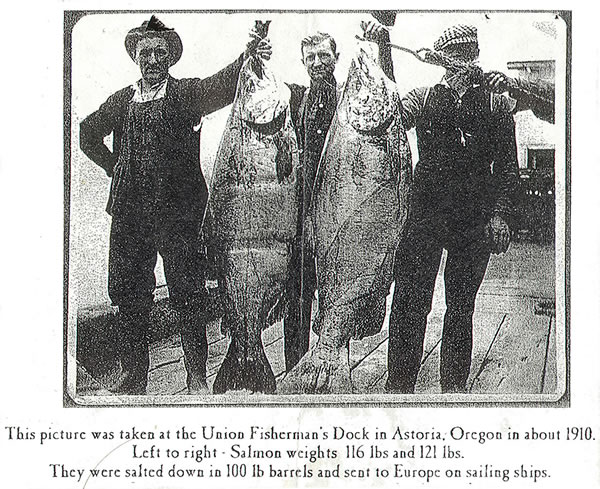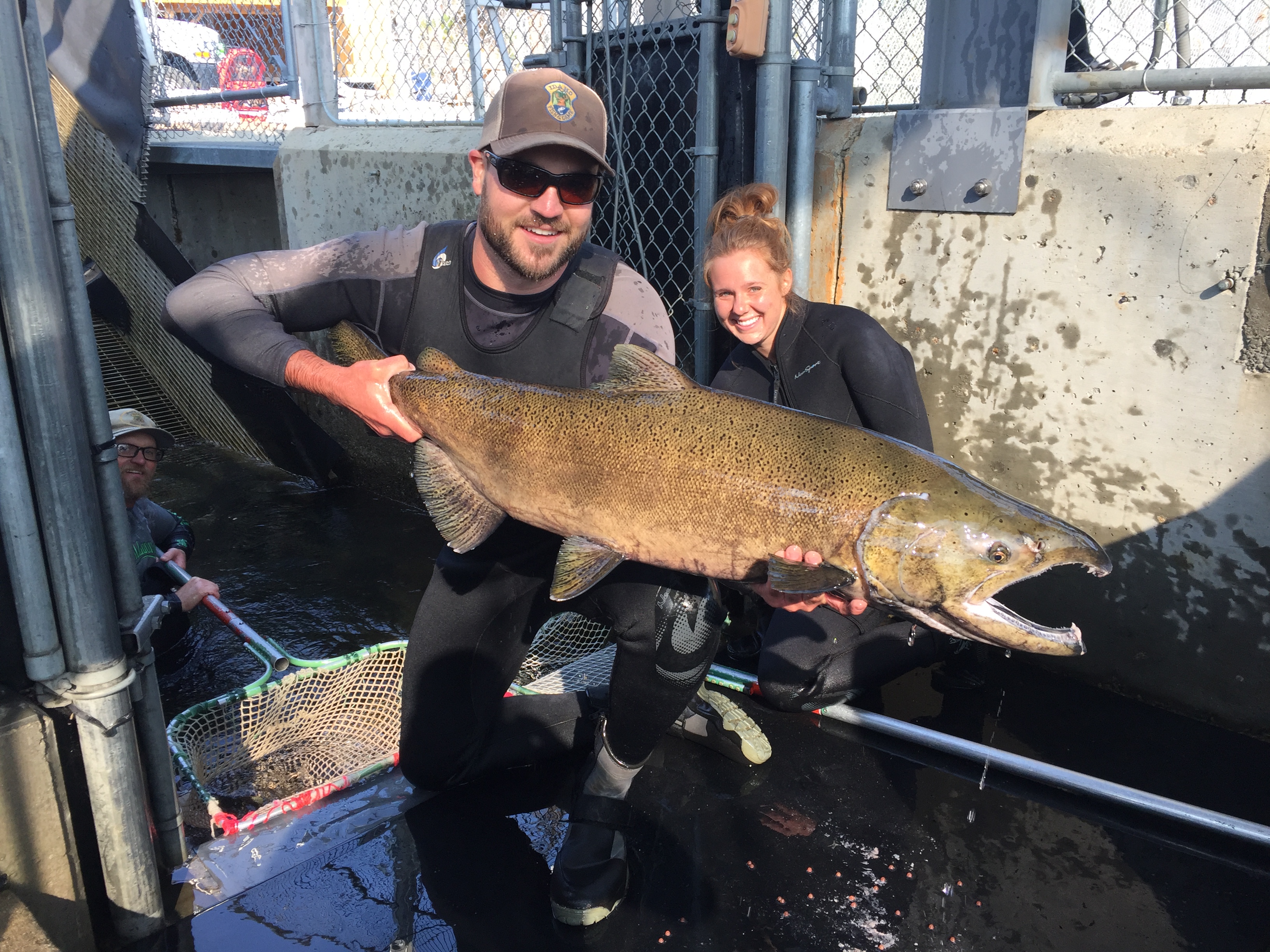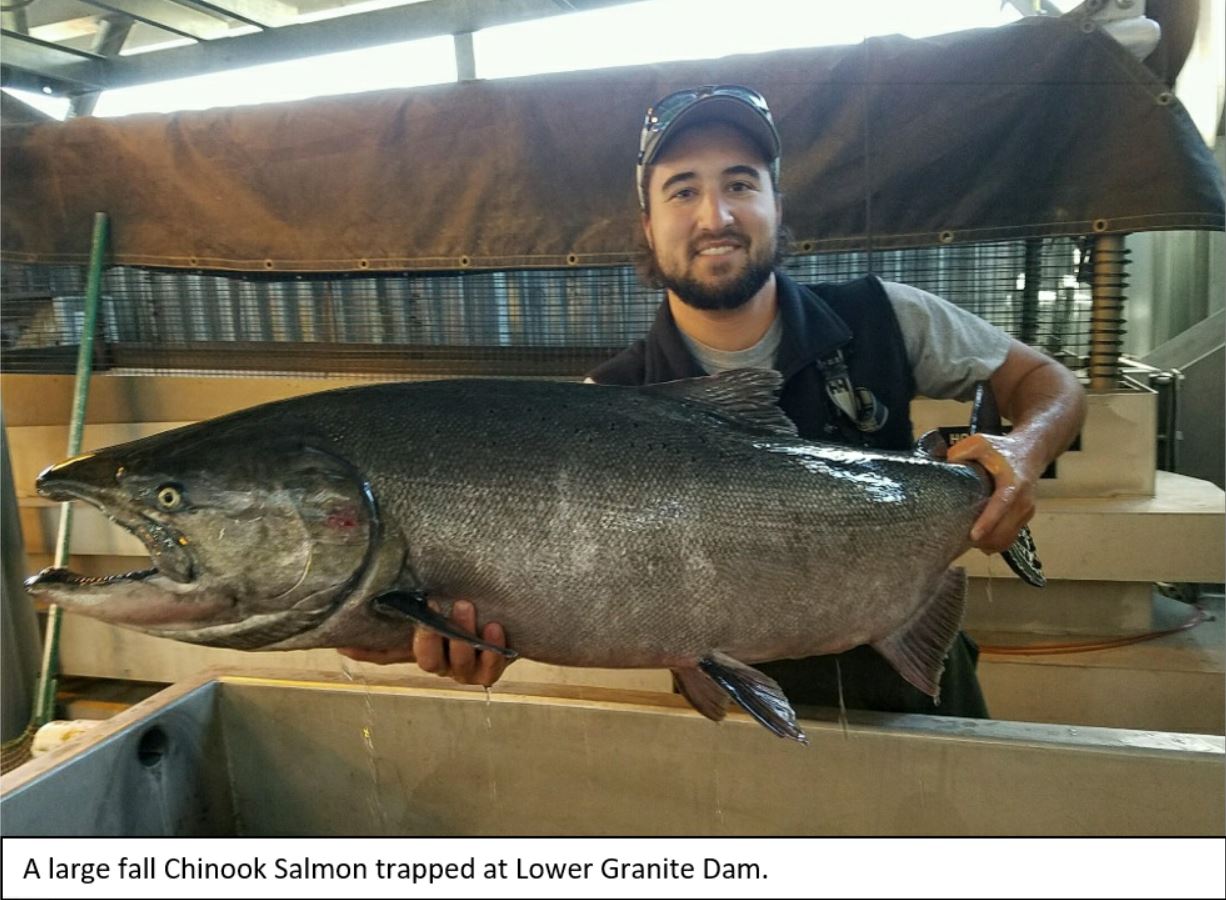Salmon swimming back to Idaho rivers are often named by season. Chinook salmon in Idaho may fall into one of three common “runs” called spring, summer, or fall. How are these names assigned? Idaho’s salmon must travel a long way after leaving the ocean before they reach their spawning grounds, so it might not be clear why run names are important.
Salmon consistently leave the ocean at specific times of the year. Salmon migrations in large river basins often have multiple pulses of fish, showing peaks and valleys in abundance over a year. The runs are named for the season in which the peaks happen. People soon realized that fish in the different pulses had different traits, like where they spawn and how old or large they were, and when the juveniles born from each run type migrate to the ocean.

Daily counts of Chinook Salmon crossing Bonneville Dam in 2015, showing the timing of spring, summer and fall runs. Blue is spring, orange is summer, and gray is fall.
The run timing of Idaho’s salmon (and all Columbia River Chinook salmon) is assigned at Bonneville Dam, which is on the Columbia River near Portland, Oregon, about 146 river miles from the Pacific Ocean. Chinook salmon there are categorized into one of three groups based on when they reach the dam on their migration. The “spring run” of Chinook salmon arrives from March to May. The spring run plays a big part of annual fishing seasons and these fish are known for their flesh quality. Spring Chinook tend to be smaller than those in the other runs. Chinook arriving in June and July form the “summer run”. The summer run may have the fewest fish, but these fish are often the largest. Historically, summer Chinook used to be the largest salmon in the Columbia basin and were often called “June hogs”. The “fall run” Chinook salmon arrive from August to November. The fall run currently has the most fish and contributes to important fisheries in the Columbia River and in the ocean. While spring and summer Chinook salmon have always been very important to fisheries in Idaho, the fall run has been increasing in popularity in the last 10 years. Historically, the amount of fishing effort revolved around the strength of the various runs, and that’s still true today.

Historically, summer run Chinook salmon were the largest salmon to return to the Columbia River basin, and were known as “June hogs”.
For Idaho’s salmon, some of the lines get a little blurry when distinguishing run types. Spring and summer Chinook salmon both spawn in higher elevation streams at roughly the same time (August and September) and the young migrate to the ocean after their first winter. In some cases, two runs sometimes occur in the same stream (Salmon River springs and summers, for example). Summer Chinook salmon from Idaho begin their migration earlier than summer Chinook from Washington, and may actually leave the ocean in May. Genetically, they are more closely related to spring Chinook Salmon in Idaho than to summer Chinook runs elsewhere. Fall Chinook salmon in Idaho spawn during October and November in larger, low-elevation rivers including the Snake River, the Clearwater River, and the lowest parts of the Salmon River. Many (but not all) young fall Chinook salmon migrate to the ocean before their first winter – a full 6 to 18 months before their spring and summer run cousins.

Idaho Fish and Game staff hoist a large summer Chinook salmon from the trapping station on the South Fork Salmon River near Warm Lake during annual spawning and counting operations.
Run names are important but don’t always line up with Chinook populations in Idaho, similar to steelhead. The strength of the run peaks are important information for fishery management, especially downstream from Idaho. Understanding the timing of the various runs is important to conservation and management as Idaho’s salmon travel from the ocean to their spawning grounds.

Check out the wild salmon and steelhead page for more interesting articles.
